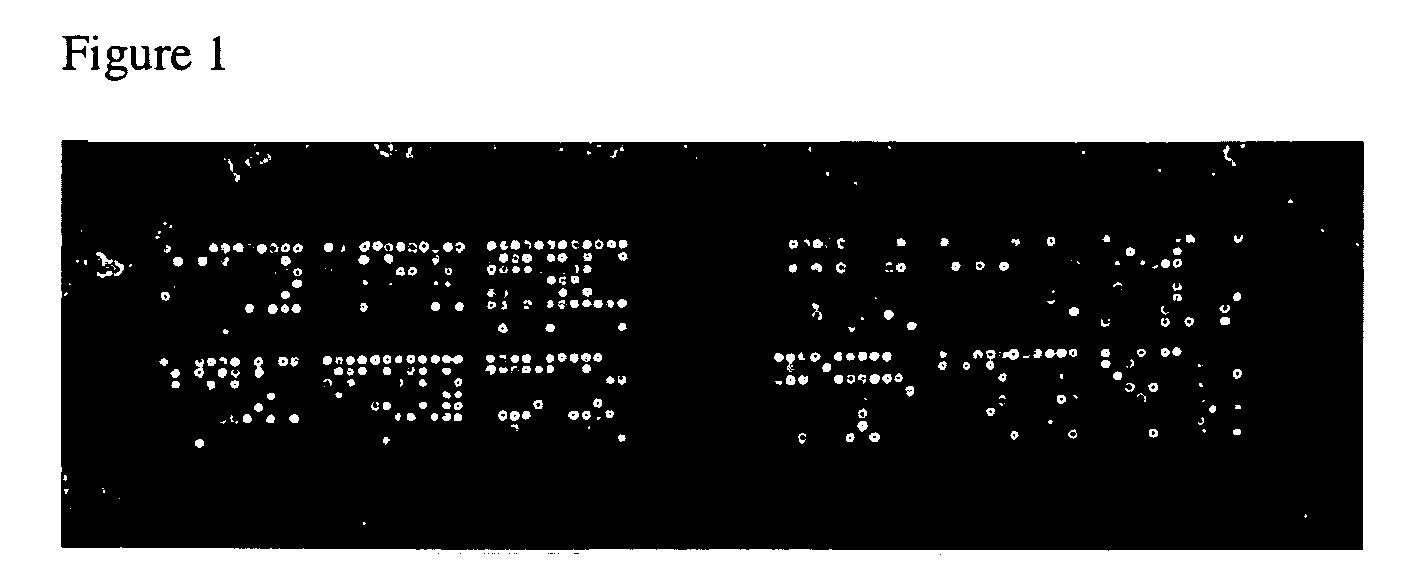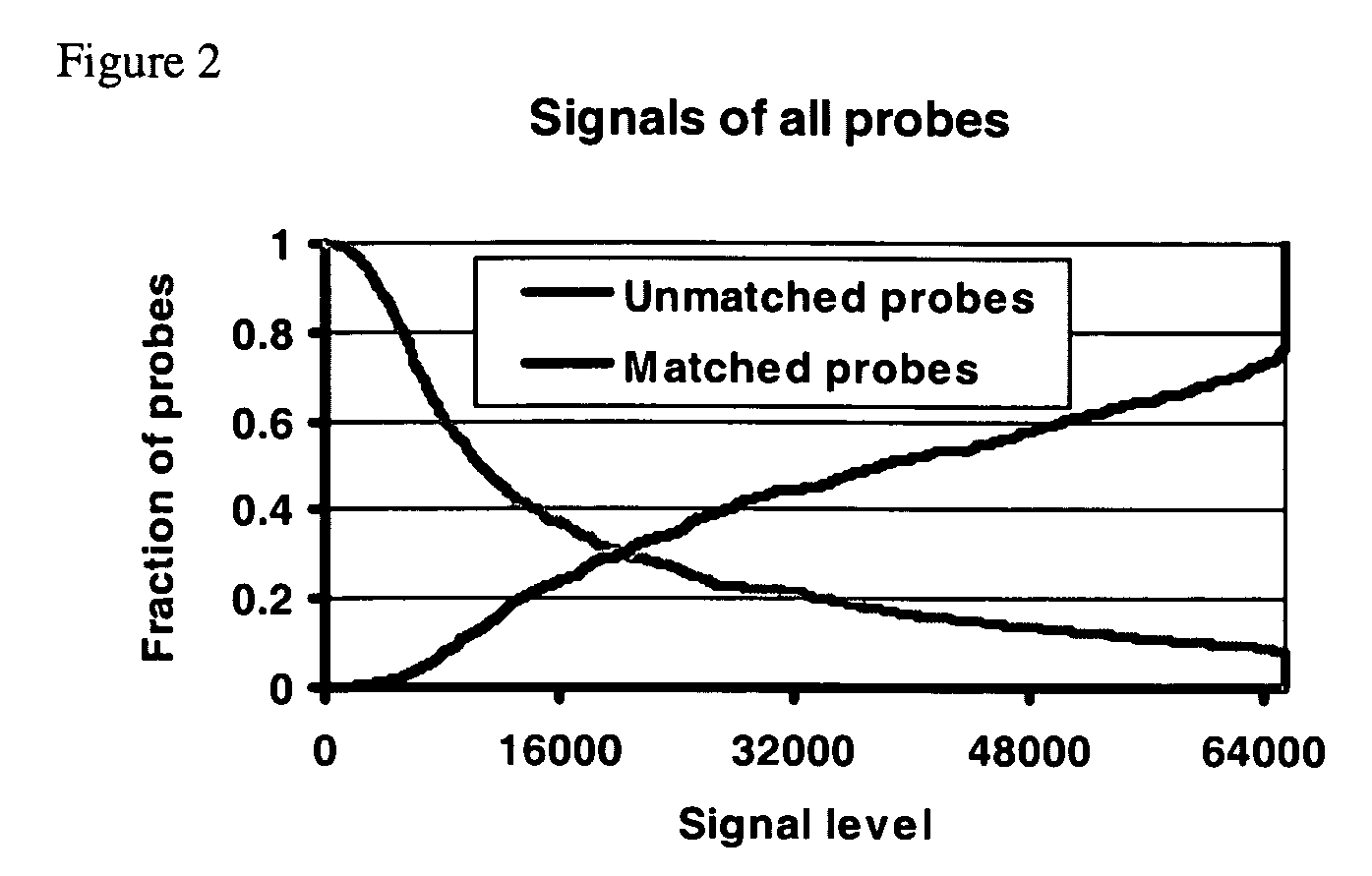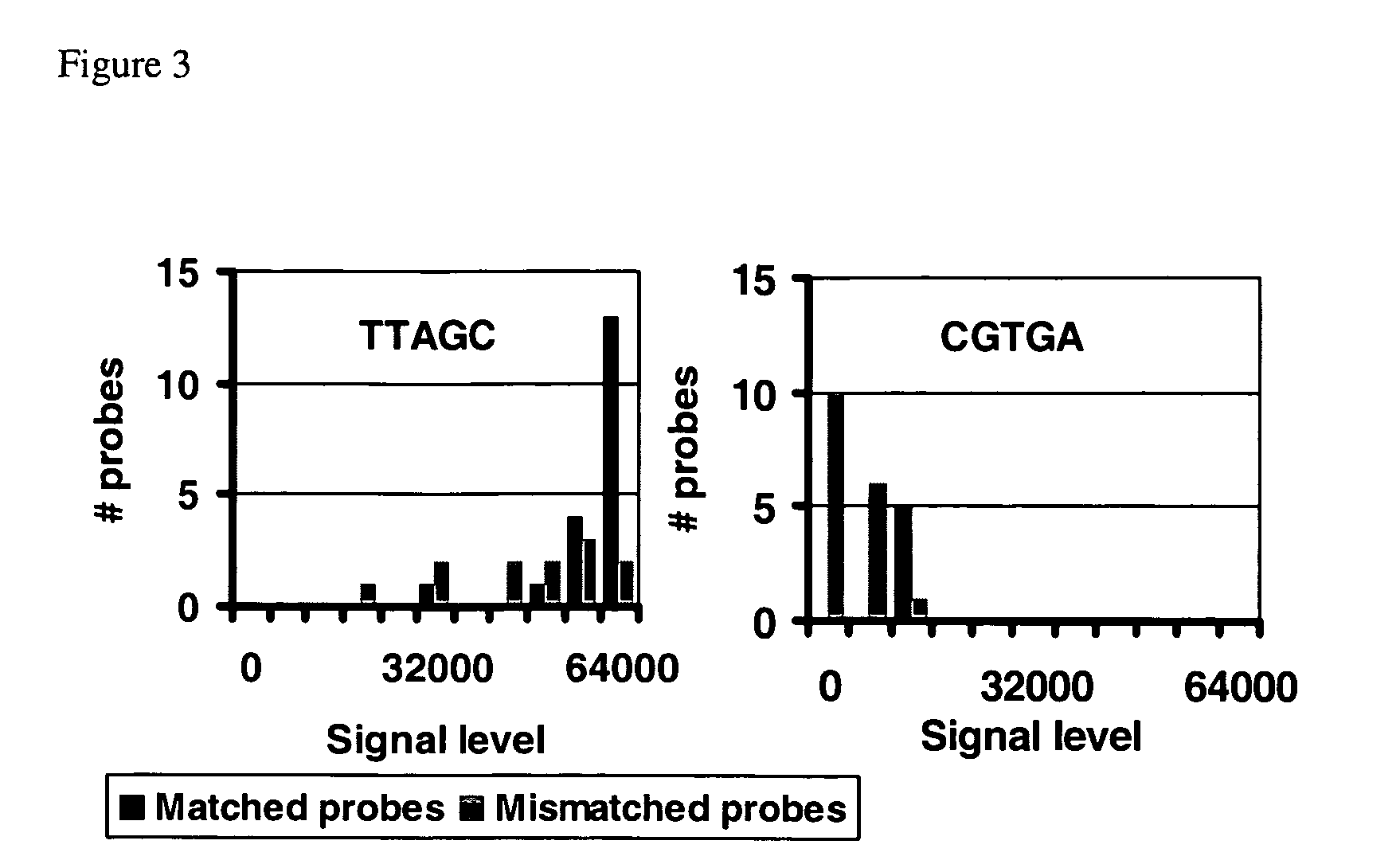Method for sequencing polynucleotides
- Summary
- Abstract
- Description
- Claims
- Application Information
AI Technical Summary
Benefits of technology
Problems solved by technology
Method used
Image
Examples
Embodiment Construction
[0095] Target Molecules
[0096] Target samples included 10 synthetic double stranded DNA molecules of length 25-35 bp and 32 PCR amplicons of length 100-140 bp (see Tables 1 and 2).
TABLE 1summary of datasets analyzedExperi-TotalNumber ofmentsnumber ofProbe setprobesper datasetDatasetsexperimentsAngiotensinogen 176 unique616tilingCFTR tiling 1767 / 82, 3, 4, 530(166 unique)Universal1119666(1024 unique)
[0097]
TABLE 2Ex-peri-TargetDatasetmentType1LocusFrom2To3Mutant311AAGT440784177W2AAGT40784177ATG281ACG3AAGT40784177W4AAGT40784177ATG281ACG5AAGT40784177W6AAGT40784177ATG281ACG21ACFTR5107766107863GGA542TGA2ACFTR107782107891GGT551G[G / A]T3ACFTR107782107891CGA553TGA4ACFTR107810107917AGG560ACG5SCFTR107803107827GGA542TGA6SCFTR107803107827W7SCFTR107858107881W31ACFTR107766107863GGA542TGA2ACFTR107782107891GGT551G[G / A]T3ACFTR107782107891CGA553TGA4ACFTR107810107917AGG560ACG5SCFTR107834107856W6SCFTR107834107856GGT551GAT +CGA553TGA7SCFTR107858107881AGG560ACG41ACFTR107782107891GGA542TGA2ACFTR107782107891...
PUM
| Property | Measurement | Unit |
|---|---|---|
| Fraction | aaaaa | aaaaa |
Abstract
Description
Claims
Application Information
 Login to View More
Login to View More - R&D
- Intellectual Property
- Life Sciences
- Materials
- Tech Scout
- Unparalleled Data Quality
- Higher Quality Content
- 60% Fewer Hallucinations
Browse by: Latest US Patents, China's latest patents, Technical Efficacy Thesaurus, Application Domain, Technology Topic, Popular Technical Reports.
© 2025 PatSnap. All rights reserved.Legal|Privacy policy|Modern Slavery Act Transparency Statement|Sitemap|About US| Contact US: help@patsnap.com



